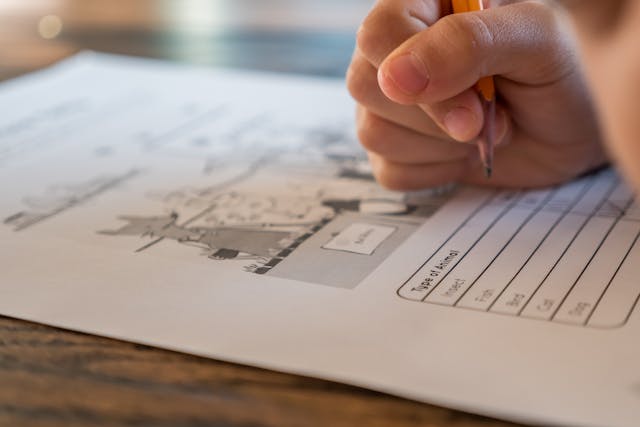
When did exams start? Exams started in China in 605 AD.
Modern schools, universities, and other educational institutions have complex systems of examinations. The purpose of them is to rank students, decide if people pass or fail, see if schools are teaching successfully, see if students are learning successfully, and many other reasons. There are valid arguments in favor of examinations and there are valid arguments against examinations. However, the majority of students and teachers hate them. So, where did they come from?
Education has existed for millennia, but it was not standardized. The average person didn’t need an education because they worked in agriculture, or some other kind of manual work. There was no need to read or write. In fact, for most of recorded history, it is the tiny minority that were able to read and write. Most education was connected to religions, in a temple or monastery, or connected to government. The people who were educated were the sons of the wealthy and they were the people destined to work in the temples, or in the government. If you were born a peasant, it was almost impossible to get into a different system and girls were very rarely educated.
Ancient Greece had a system of schools where boys from wealthy families could go to learn rhetoric and philosophy. These were considered vital for a career in government. Tests were given to the students, but they were often verbal. Rome also had a system of education, but it was more common for tutors to visit a wealthy house and educate young boys. Their exams were also mostly oral. Ancient India had a system where young boys could travel to live and learn from a guru. China appears to have had the most advanced system of education, which is probably why the first exams started there.
The first official examinations were not in schools, but for positions in the government. The examinations were started by the Sui Dynasty in 605 AD and the goal was to bring in a merit based system where people would be appointed government roles based on their ability and not based on who their family were or their wealth. It was a noble idea, but the majority of people who were educated were also wealthy, so it appears to be a merit system within the wealthy class. The Sui Dynasty didn’t last very long, but the Empress Wu Zeitan, about 70 years after the exam system started, appears to have expanded the types of tests and the importance of the exam system. The system doesn’t seem to have spread out of China and the Snog dynasty, about 400 years after Empress Wu Zeitan increased the examination system again and they also increased the number of government schools so that more people who were worthy could serve in the government and to curtail the number of people who were there just because of their family name. This form of government exam spread throughout Asia and they were known about in the West.
During the Industrial Revolution in England, there was a lot of talk about bringing in the Chinese system of government exams, but many people were against it simply because it was a Chinese system. The East India Company decided to try out the system in Indian in 1829 and it was very successful. It was brought into the English system in 1870. About a hundred years before this, several universities had also started to use written examinations. Up to that point, examinations were oral and consisted of a student giving a lecture or defending a point. The universities of Oxford and Cambridge began to use written testing in some subjects. However, it wasn’t standardized.
Exams really came to the fore when compulsory education was introduced. The first countries to introduce compulsory education were Denmark and Norway, in 1739. Other countries followed, although slowly. It was only as countries industrialized and more people moved to the cities that they realized an educated population would be beneficial to everyone. England followed in 1880. The USA followed state but state, starting in 1852, with Massachusetts and finishing in 1918 with Mississippi. In Britain, standardized tests into university were introduced in about 1850. In America, Horace Mann reformed the entire educational system at roughly the same time and introduced testing. Schools still had a lot of freedom though. The need for school reform and for examinations was brought home in WW1. For the first time in history, millions of young men enlisted in the army and were taken to the front to serve. The number of illiterate people was surprising and something needed to be done about it. By World War 2, standardized testing had been brought in across the board. Schools tested, universities tested, companies tested, governments tested, and even the army tested. It had become normal. And this is what I learned today.
Photo by Jessica Lewis 🦋 thepaintedsquare: https://www.pexels.com/photo/schoolchild-solving-elementary-science-test-4022332/
Sources
https://www.assignmentvision.co.uk/blog/who-invented-exams
https://en.wikipedia.org/wiki/Sui_dynasty
https://en.wikipedia.org/wiki/Exam
https://en.wikipedia.org/wiki/Horace_Mann
https://en.wikipedia.org/wiki/Wu_Zetian
https://www.ancient-egypt-online.com/education-ancient-egypt.html
